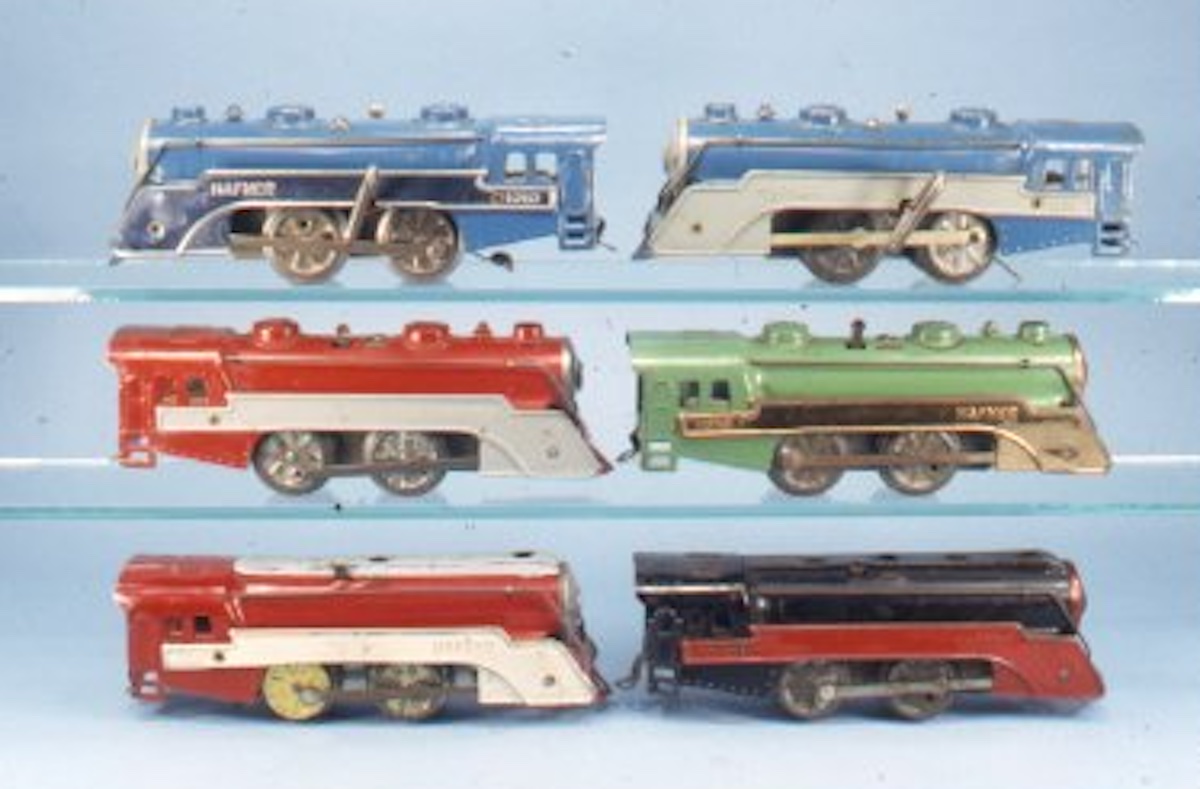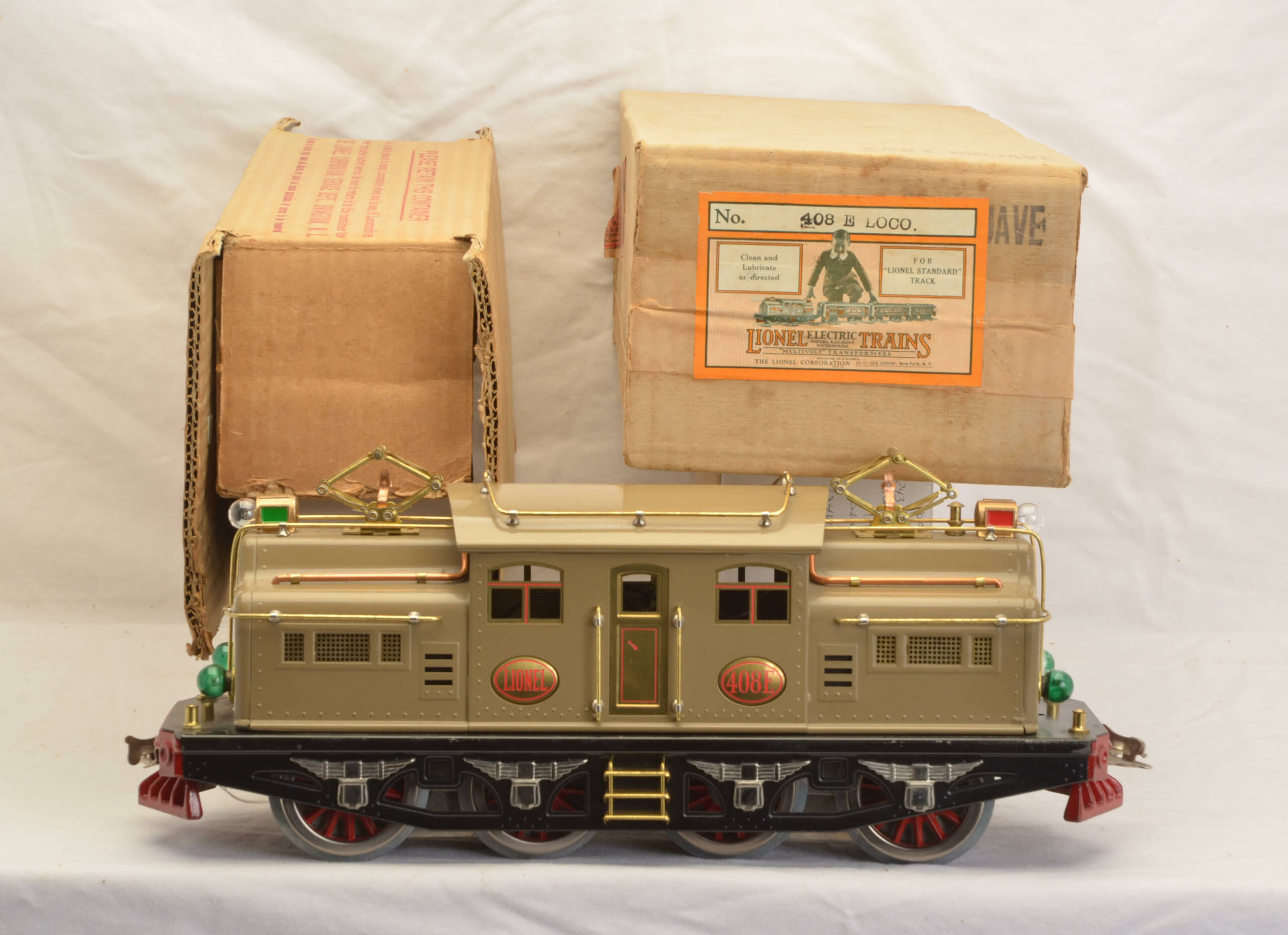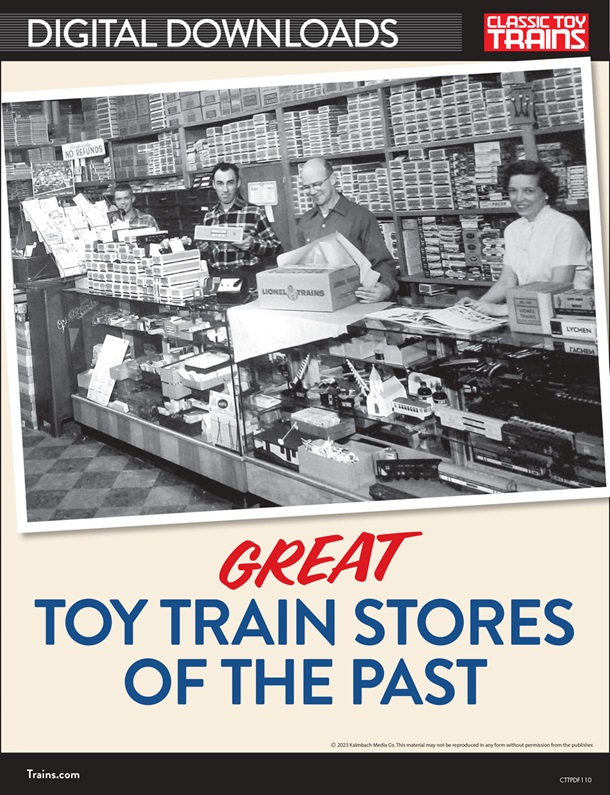I found this manuscript from the late John Grams in our manuscript files. There was no date on the envelope but it’s likely from the early 1990s. The article discusses 12 Lionel products that, while great inventions, were fraught with problems or didn’t work exactly as advertised. He included the following disclaimer:
“Lionel trains were sold as toys. They were fun, fairly reliable and expensive playthings, manufactured with no thought beyond that purpose. They were not supposed to be precision scale models. That was an entirely different thing. While they were durably constructed, the trains were not intended to outlast the interest span of their young owners. No one considered them to be objects of popular art or future collectibles.
The toy business has always been a fickle one, trendy and highly competitive. J. L. Cowen not only had fine quality imports to worry about as he built his business, the domestic competition from Ives, American Flyer, and Marx must have contributed significantly to his stress. While Lionel was eventually able to absorb Ives and Flyer, Marx was still there gobbling up the low price, high volume end of the market.
The trains were not designed and produced by Santa’s helpers at the North Pole, but by flesh and blood human beings on an assembly line in New Jersey. Mistakes happened. Flaws and defects were sometimes overlooked.”
I will be sharing these items over the next few weeks. I hope you enjoy them. –Rene Schweitzer, Editor of Classic Toy Trains
Lionel’s Paper Train

Officially known as the “Lionel Wartime Freight,” this five-unit train, which was patterned after regular Lionel products, came with 198 inches of track, two accessories, three figures and three pieces of cargo. Like “Lucky Strike Green,” “Lionel Steel” had also “gone to war,”.so this set was manufactured of materials which were not vital to the military, ie. cardboard, heavy paper, and lollipop sticks.
It came in kit form. Everything was printed on die-cut sheets. “Simple assembly” consisted of punching out the pieces and putting the right tab in the right slot. However, the design was complicated, the paper stock fragile, and the die-cutting uneven. Pieces tore in the wrong places, tabs were too large for the slots, seams popped open and subassemblies pulled apart. Putting the train together was tedious and frustrating. Few kids had the skill, dexterity, and patience to complete the project by themselves.
However, if extreme care was exercised (perhaps with parental assistance), the parts cut out with a razor blade or a hobby knife and the assemblies glued or taped step by step, the thing did fit together and work. The train could actually be pulled around the track at slow speed without mishap. The cars shimmied and wobbled, but they were a colorful sight to behold. In 1943, they were the only game in town.
I think the Lionel paper train contributed much to the overall war effort. It made kids want to buy War Stamps, collect scrap metal, and do everything else in their power to hasten the day of victory, if for no other reason, so that Lionel could make “real” trains again.














